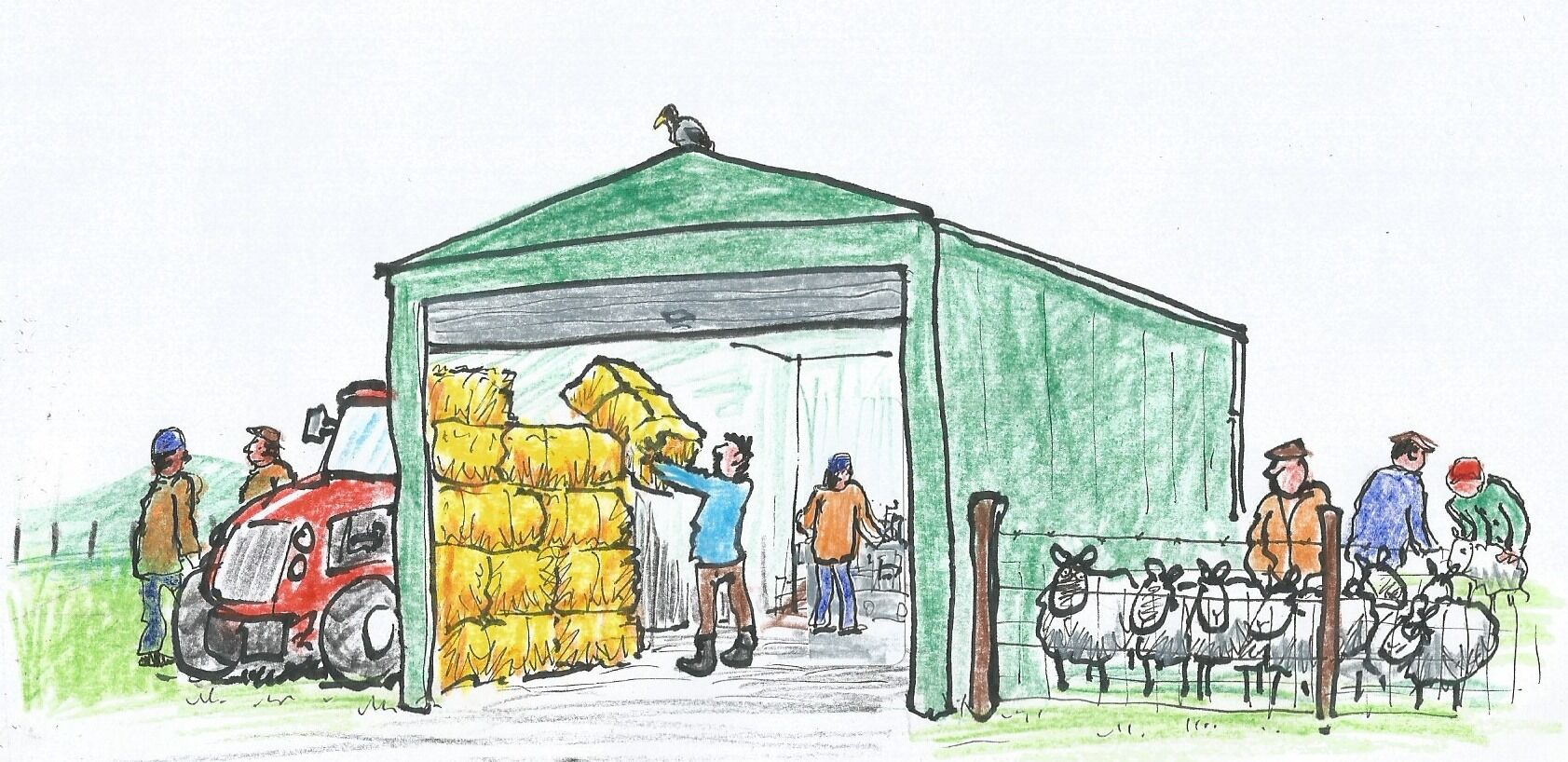Common Grazings Improvements: A Step by Step Guide
11 March 2024Does your Common Grazing want to create a new hill park, build a shed or maybe install a fank and some handling pens?
If your Common Grazings Committee are thinking about, or planning to make an improvement to the Common Grazing then there is a particular process to follow. This step by step guide will walk you through what you should do and who you should inform when proposing to carry out the improvement.

Step 1 – Identify whether the work is an improvement or maintenance?
An improvement would be anything new to the common grazings, whereas maintenance covers anything that needs repairing or replacing.
You can find more information about the different types of improvements you could consider here.
Step 2 – Collect quotes for the improvement(s)
Consider whether there will be any material or labour cost to complete the improvement.
If you’re planning on using a Common Agricultural Grants Scheme (CAGS) for the improvement, be sure the get the correct number of quotes required to meet their conditions.
Further support relating to CAGS is available here.
Step 3 – Work out the allocation of the cost and grant based on each shareholder’s souming
The videos below can help with this:
Step 4 – Decide what will happen to the CAGS Grant
Once it has been paid out, what will happen to it? Will it remain in the pot or will it be paid out to shareholders?
Step 5 – Determine if your Common Grazing has sufficient funds to pay for the proposed improvement
If no:
Inform each shareholder of the proposed improvements and the cost, as well as the cost division detailing every shareholder’s contribution and refund amount. If applying for CAGS they should also receive a copy of the CAGS application. This has to be done in writing, and be delivered to the shareholder, left at their proper address, or sent to them by post using the recorded delivery service.
The Commission has prepared a template notice that can be used, which you can find here.
If yes:
Inform each shareholder of the proposed improvements and the cost, as well as the cost division detailing what would have been every shareholder’s contribution and refund amount (but point out they will not have to pay because there are sufficient funds already). If applying for CAGS funding they should also receive a copy of the CAGS application. This has to be done in writing, and be delivered to the shareholder, left at their proper address, or sent to them by post using the recorded delivery service. The Commission has prepared a template notice that can be used, which you can find here.
Step 6 – Do any of the shareholders object to the improvements?
If a shareholder wants to object then the committee would need to decide whether to take forward a reworked project without all the shareholders, or go ahead with the proposal allowing the objector to make their case to the crofting commission to object. The Commission may approve the proposals or the proposed allocation of expenditure with or without modification or reject them.
Step 7 (Optional) – Apply for CAGS Grant
More information about the CAGS Grant can be found on the rural payments website: https://www.ruralpayments.org/topics/all-schemes/crofting-agricultural-grant-scheme/
Step 8 – Carry out the improvement and pay for it
Whether or not you are claiming CAGS, the committee must maintain an account of all financial transactions associated with these or any other works of improvement to the common grazings. If claiming CAGS, make sure you keep invoices and proof of payment.
Step 9 (Optional) – Claim CAGS Grant
Once the work is complete, you can claim the your money back from rural payments.
Step 10 – Pay out proceeds
If it was agreed that any proceeds would be paid out to participants, this can now be done. Otherwise the money remains in the pot.
Sign up to the FAS newsletter
Receive updates on news, events and publications from Scotland’s Farm Advisory Service

